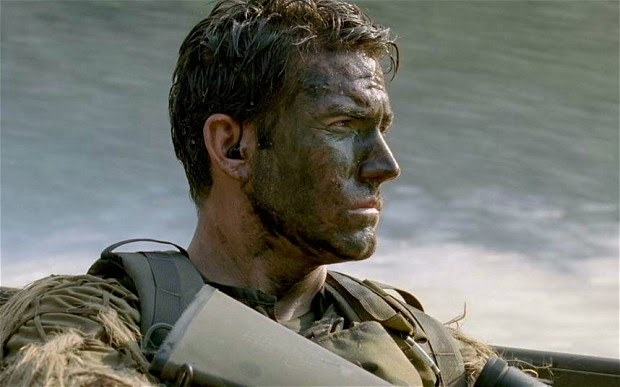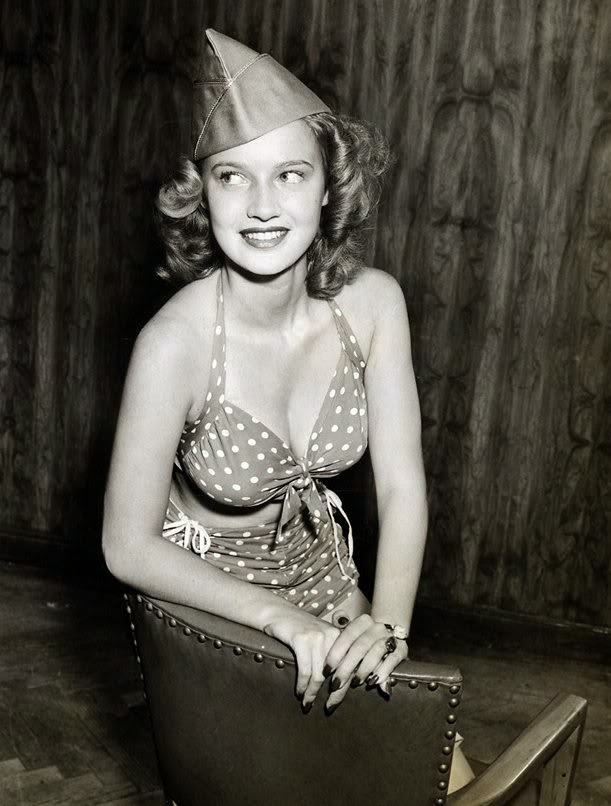-“The cost of freedom is always high, but Americans have always paid it.” -John F. Kennedy
-“I don’t regret any ot it. I’d do it again. At the same time, war definitely changes you.” -Chris Kyle (American Sniper)
American Sniper ('Movie of the Year' AFI Award winner) has become a true phenomenon after surpassing the $250 million box office mark, its political repercussions being agitatedly discussed. Even First Lady Michelle Obama has joined the debate, commenting on the movie’s “wrenching stories” and “complex journeys.” Despite of being the recipient of irate attacks and polemic diatribes, Clint Eastwood insists his film was conceived as a character-study, chronicling real Navy SEAL veteran Chris Kyle’s experiences (a sniper who boasted a record of over 160 confirmed kills during his 4 tours on Iraq, author of the bestselling memoir American Sniper published in 2012).
Touching barely on the political issues, Eastwood’s film is a thrilling biopic which doesn’t shy away from showing us the darkest physical and psychological effects suffered by Kyle and his fellow soldiers, although, according to its detractors, it doesn’t fully answer the total implications that could have been explored in the wider sociological, doctrinal and military context. Although we see the conservative faction gleefully enjoying the celebration of the film's pro-American angle, the oppressive and austere tone from several thought-provoking scenes will be valued on the left side of the spectrum.
Jason Hall (who wrote the American Sniper screenplay) points out in Rolling Stone: “The beautiful part is that while everyone on the left is arguing with everyone on the right, and they seem to get further and further apart, it’s the guys in the middle that this was for. It’s hitting them in the exact right spot.”
Chief Chris Kyle’s memoirs are laid out in a fervent, prideful style in fourteen chapters with titles like Takedowns, Five Minutes to Live, Sniper, Dealing Death, Family Conflicts, The Punishers, The Devil of Ramadi, Man Down, Mortality and Home & Out, whereas the style from the film is predominantly restrained and somber. Even the long action scenes in Iraq lack the typical gung ho approach so many Middle East blockbusters use to build up the adrenaline highs during the battle.
Carrying a surplus 40 pounds, Bradley Cooper embodies the controversial figure of Chris Kyle, the son of a church deacon and a Sunday school teacher, who grew up developing an instinct for protecting the “sheep.” Shooting guns and riding horses were the early passions of this Texan ‘cowboy at heart’ turned decorated sniper. While having a blast in the saddle bronc bustin’ circuit, he attracted attention from the rodeo groupies or ‘buckle bunnies’ (there is a dramatized scene in the first part of the film when Chris confronts a cheating girlfriend).
In San Diego, after finishing his BUD/S training at the Navy, Chris meets Taya Renae (whom he defines in his autobiography as ‘the love of my life and better half’) at a bar, translated on screen in a very effective scene made memorable by an inspired Sienna Miller, when Kyle unveils the chinks in Taya’s armor during a funny banter session about beers, rednecks and American ideals.
Deployed in Nasiriya (Iraq) in 2003, Chris executes his first target about 50 yards away (his record would reportedly be 2,100 yards). He continues his mission with a overzealous faith towards his duty, although in the film we witness Chris’s increasing anguish when his threats on Iraqi ground happen to be children and women (in contrast with his more blunt “I deeply hated the evil that woman possessed” remark from the book). Later Chris is sent to Fallujah, Ramadi (where he’s tagged ‘the Devil of Ramadi’ by enemy forces who offer a bounty on his head) and Baghdad, the conflict escalating all over and the individual losses of his platoon more frequent.
Chris becomes ‘the Legend’ within the SEALs due to his devoted and fearless nature. In the film, Marc Lee (Luke Grimes) asks him: “You got some kind of saviour complex?” and Chris replies: “No. I just want to get the bad guys, but if I can’t see them I can’t shoot them.” But the dark effluviums from the conflict left behind are as viscous like oil, as wasted like blood, and can annihilate the combatant’s spirit even entrenched in safety back home.
Some viewers may believe Steven Spielberg, who was originally going to direct the film, might have handled the ideological subtext better, but I find many of the charges of ‘propaganda’ against the film preposterous, since it’s clearly devoid of self-congratulation and it never feels frivolous — no chirpy soundtrack or banal Hollywood camaraderie.
While it’s not unusual to interject sexual references into a bellicist epic, usually raunchy stuff, here this material is more sensitively displayed, following the traditional meet-cute path and featuring a tender courtship with nuances of intimacy between Chris and Taya.
I think one great difference between American Sniper and other contemporary war films as Black Hawk Down, Jarhead and The Hurt Locker is the romantic relationship between Chris and Taya, the underlying warmth at the core of American Sniper, which allows us to feel empathy without ever losing our critical eye. One example is Taya warning her husband: “If you think that this war isn’t changing you you’re wrong. You can only circle the flames so long.”
The impression Chris Kyle gives in his book, of being a gun-obsessed, resilient, judgemental war professional, is quite different from his filmic counterpart. Bradley Cooper’s outstanding performance forges a portrait of a fundamentally good-natured, compassionate and vulnerable man who loves his country and its foundational principles that he’ll defend until death. The real Chris had an eccentric side, sometimes replacing his official headgear for an old Longhorns baseball cap and customizing his uniform; he could be idealistic (“Helping each other out – that’s America”) or borderline fanatical (“Everyone I shot was evil. They all deserved to die”); he was a fan of John Wayne (“Rio Bravo may be my favorite”) and Clint Eastwood. The duelo scene between Chris and Iraqi sniper Mustafa pays homage to the Western genre in renewed fashion through a portentously shooting sequence.
What Cooper prodigiously attains is a balanced sense of right and wrong, love and hate, family and duty, projecting a personality the real Chris probably imagined in himself at times, a noble, superior warrior with a golden heart. Cooper hits all the right notes —macho swagger, anger, PTSD-laden hero— so it’s heartbreaking when the camera, playfully but ominously, frames Chris Kyle’s final moments in company of his wife and kids. Bradley Cooper won the 20th Critics’ Choice Award as ‘Best Actor in an Action Movie’ and has been nominated to an Oscar. He’s not the Academy Award front runner but I wouldn’t be too surprised if he pulled an upset. “Something about him was beautiful,” Cooper says of Chris Kyle (from whom he gleaned “a real authenticity” during their only phone call) in a NPR ‘Fresh Air’ interview, highlighting “the fact that 22 veterans commit suicide each day.”
British humanist John Stuart Mill wrote: “War is an ugly thing, but not the ugliest of things. The decayed and degraded state of moral and patriotic feelings which thinks nothing is worth a war is worse.”
Another British philosopher, Roger Scruton, in his essay “Immanuel Kant and the Iraq War” (2004), contemplated: “We are confronted with a state that is manifestly despotic. Suppose there is a larger power, motivated perhaps by some version of the Ideal of Reason that Kant puts before us in ‘Perpetual Peace.’ Suppose this larger power is confident it can destroy the despotic state… then ask Kant the question: would it be right to go to war? There is no question of having to prove the existence of weapons of mass destruction, or anything else beyond the known facts about the despotism’s past behaviour. The US is of course not a fully achieved republic in Kant’s sense — but as Kant would have been the first to admit, nothign created from the crooked timber of humanity is a fully achieved anything, still less an instance of what is, after all, an Ideal of Reason.”
Harking back to Plato’s Laws (360 B.C.E), we find: “in reality, every city is in a natural state of war with every other, not, indeed, proclaimed by heralds, but everlasting. All men everywhere are the enemies of all, and each individual of every other and of himself.” In Plato’s Thrasymachus (Republic Book I), we are told “justice is the interest of the stronger,” an argument which could be aducced by those who condemn unfair military interventions or the imperialistic ambitions of America’s oligarchy.
Let’s finish our ruminations about the philosophy of war with the persuasive words of George Washington (first President of the United States, Commander-in-Chief of the Continental Army during the American Revolutionary War): “To be prepared for war is one of the most effective means of preserving peace.”
Article first published as Chris Kyle and ‘American Sniper’ – The Book, the Movie, and the Philosophy of War on Blogcritics.
Note from Weirdland: Jason Hall, the screenwriter of "American Sniper", messaged me saying my article was "a great piece, with a deep insight, in the same league than Richard Brody's for The New Yorker", I'm very flattered, because I loved Jason's fantastic job at translating Chris Kyle's memoirs to the screen.





































































